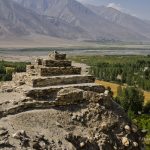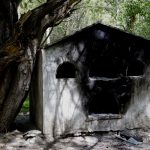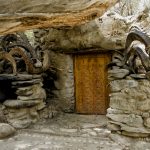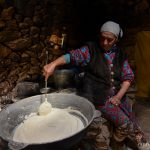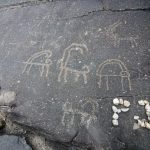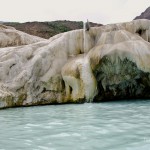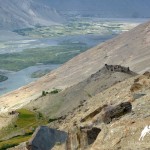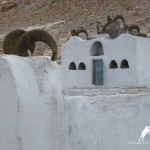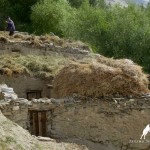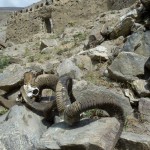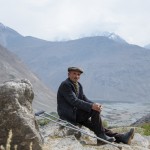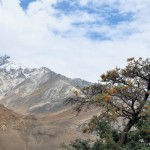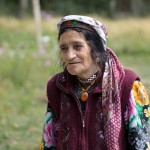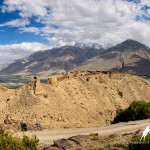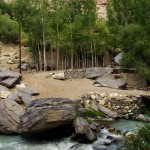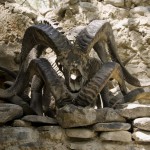The wild and wonderful Wakhan Valley, also known as the Tajik Wakhan Corridor, is a beautiful and remote corner of the globe where the Pamir Mountains, Hindu Kush, and the Karakoram Mountains entwine. Amidst their jagged, snow-capped peaks, there is plenty to discover on a Wakhan Valley trekking tour in Tajikistan – from historic museums and hot springs to ancient fortresses and sacred shrines.
Surrounded by the mountains of the Pakistan-Afghanistan border, the Wakhan Valley is one of the most beautiful valleys on the planet. With a convenient location along the famous Pamir Highway, you can explore many of the valley’s unique attractions on a trekking adventure, helicopter Wakhan Valley tour, or jeep adventure with Paramount Journey.
Most of the Wakhan Valley’s wonders relate back to the valley’s fascinating ancient culture. The Pamiri people are Ismaili, a sort of Shiite Muslim, and are deeply religious. You cannot venture very far into the Wakhan Corridor without coming across some form of sacred roadside shrine, monument or memorial.
These Tajik shrines, known as an ‘oston’ or ‘mazor’, are created in honor of Islamic holy men, academics, and poets. They are usually marked with a pile of circular stones, colorful ribbons and animal horns, such as those of an ibex or Marco Polo sheep – a tradition that indicates a pre-Islamic influence, particularly Zoroastrian. Interestingly, many of these shrines date back to the days before Islam itself was founded.
One of the most famous large shrines in the Wakhan Valley is the one that stands on the outskirts of the village of Zong in Tajikistan. This Ismaili shrine in the Pamirs consists of a white roofless building marked by the horns of what was once a Marco Polo sheep.
Continue your journey around the Wakhan Valley and you will come across yet another famous shrine: the Shrine of Shah Kambari Oftobi in Langar. This memorial honors the man who brought Ismailism to the village. Located on the opposite side of the prayer house, the Shrine of Shah Kambari Wakhan Valley boasts colorful murals and a beautiful garden adorned with ram horns.
But the shrines do not always come in the shape you may expect. Another shrine in the Wakhan Valley comes in the form of the Bibi Fatima hot spring. Named after the daughter of the Prophet Muhammad, it is a popular pilgrimage site for Muslims around the world. Many believe that the water of this natural hot spring has healing properties for a number of skin ailments as well as curative powers for infertility.
If you are interested in history, you will find much of interest in the Wakhan Valley too as there are plenty of age-old fortresses as well as museums dedicated to famous Muslim men. The Wakhan House Museum is one such museum, located in Yamgchun. This is the former home of Mubarak Kadam Wakhani, a mystic, astronomer and musician who died in the early 1900s. Inside, you will find a collection of ethnographic artefacts as well as a collection of books and poetry.
Another room in the Wakhan House Museum is created as a classic 19th-century Pamiri home and portrays some traditional instruments. Another reason to visit the museum is the fascinating ‘solar calendar’ located on the road that leads up towards it. This stone has a hole that faces the western ridge and is believed to be perfectly aligned with the setting sun during Novruz (held on the 21st of March) every year.
You could plan a trip through the Wakhan Valley without a visit to the Khaakha Fortress. These crumbling ruins of an ancient fortress are fascinating enough in itself. They now serve as a military post overlooking the Wakhan Valley Afghanistan border and are often secured by military guards. But on the eastern slope of the hill you will also find the Namadguti Museum. Inside this tiny and little-known museum is the personal collection of director, Odinmammad Mirzayev. If you are lucky, he may even give you a private performance. He has been known to play his musical instruments for visitors as well as showing them how to strike fire with a flint-stone.
The best part about visiting the wonders of the Wakhan Valley is the climate. The Wakhan Valley weather is made up of mainly warm sunny days. The wind does pick up in the afternoons so for Tajikistan’s Wakhan Valley trekking tours, it is recommended to start early. Keep in mind that while it rarely rains, the nights are very cold and snow is always possible because of the altitude of the Valley.
The majority of the Wakhan Valley attractions can be combined with any other tour or itinerary with Paramount Journey, such as any other highlights along the Wakhan Valley Pamir Highway. Get in touch for more information.






